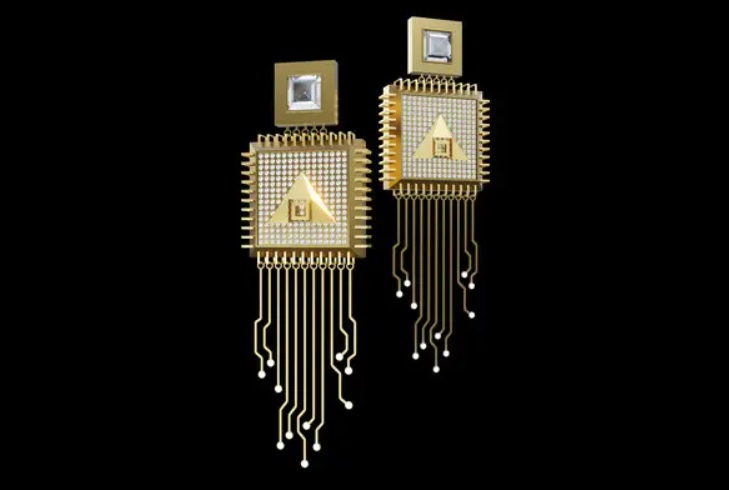
Mobile computing has evolved rapidly, liberating us from the confines of our desks. However, the inconvenience of carrying traditional devices persists. In the next era of computing, an innovative trend is emerging—digital jewelry. These elegant adornments, with embedded intelligence, represent a fusion of microcomputers and increasing processing power. This article delves into the fascinating world of digital jewelry, exploring how these wireless, wearable computers are redefining communication, security, and fashion.
Digital Jewelry – A Blend of Fashion and Functionality
Digital jewelry encompasses wireless, wearable computers that facilitate communication via email and voicemail. Beyond their practicality, they serve as fashionable accessories. This fusion of style and substance is redefining our interaction with technology.
Imagine a computerized ring powered by Java, seamlessly unlocking doors and replacing essentials like driving licenses, key chains, business cards, and credit cards. This innovative concept addresses the modern plague of forgotten passwords, enhancing convenience and security.
The rapid proliferation of portable technology has transformed how we engage with daily activities. These miniature devices offer unparalleled ease and multifunctionality, becoming versatile tools for learning and leisure.
Wearable computers come in various forms, from video screens worn like Google Glass to body-worn processors and input devices. The key challenge lies in equipping individuals with personalized, customizable information.
Digital jewelry represents the cutting edge of fashion and technology convergence. It’s driven by the incredible advancements in microchip technology that pack millions of transistors into small devices capable of storing vast amounts of data.
Digital jewelry integrates the keypad and dialing functions into bracelets. Voice recognition software simplifies calls, a feature already familiar in many smartphones. Embedded sensors and Bluetooth technology ensure seamless communication, while notification features keep users informed.
IBM is at the forefront of this revolution, designing a cell phone prototype comprising multiple pieces of digital jewelry that work wirelessly via Bluetooth. They are also developing miniature rechargeable batteries to power these components.
Advantages
- Portability: Wearable computers excel in mobility, allowing usage while on the move.
- Sensors: Equipped with environmental sensors, these devices enhance functionality.
- User Attention-Free: They require minimal user interaction, enabling multitasking.
- Freedom from Desk: Wireless and self-contained, they break free from traditional desktop setups.
- Immediate Accessibility: They eliminate the need to dig through bags or pockets.
Limitations
Despite their promise, wearable computers present health concerns like eye strain and headaches. Moreover, their high cost can limit accessibility.
Digital jewelry embodies the vision of a wireless, always-on smart device that remains aesthetically pleasing. It signifies a shift from conventional desktop computers to computers worn on the body. While these devices offer portability, they still lag behind traditional computers regarding interaction capabilities.
As we approach the fifth generation of computing, we witness a transformation where technology becomes an integral part of our attire. Digital jewelry epitomizes this evolution, offering both style and substance. With the relentless march of progress, the day is not far when we will wear our personal computers instead of merely sitting in front of them.















![A complete history of wearable technology: A timeline [Updated]](https://roboticsbiz.com/wp-content/uploads/2019/11/Sony-Walkman-218x150.jpg)





